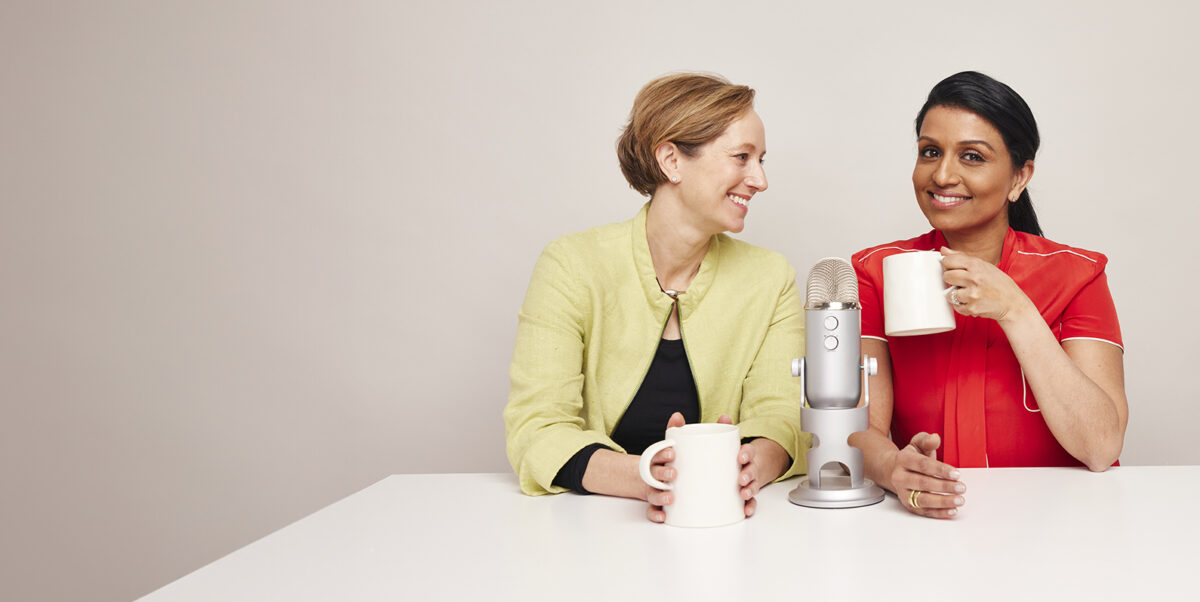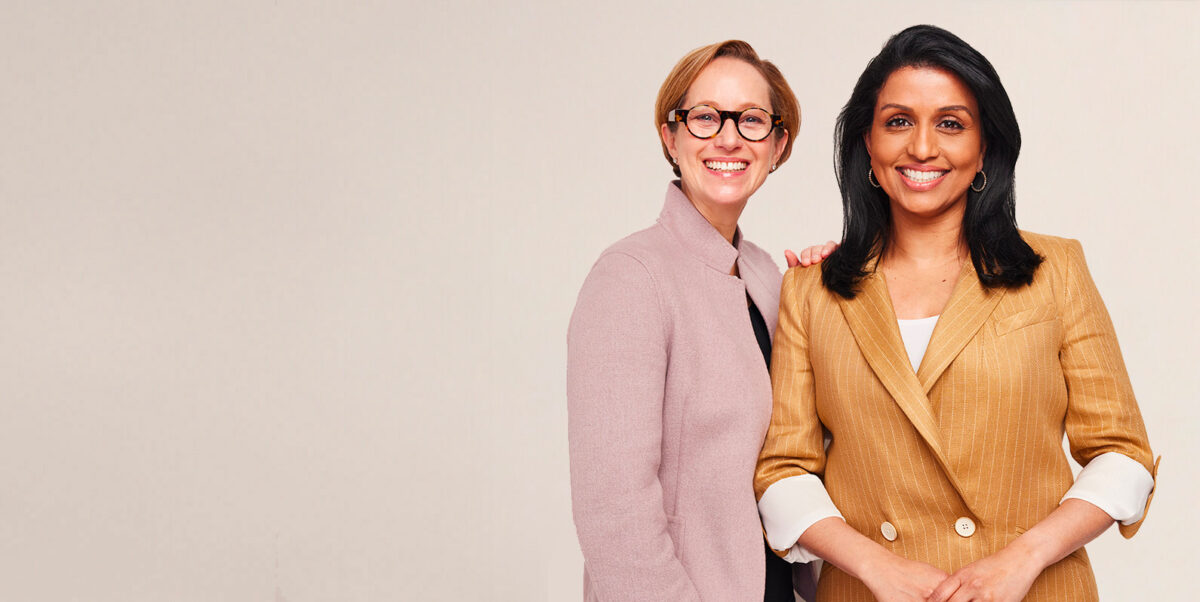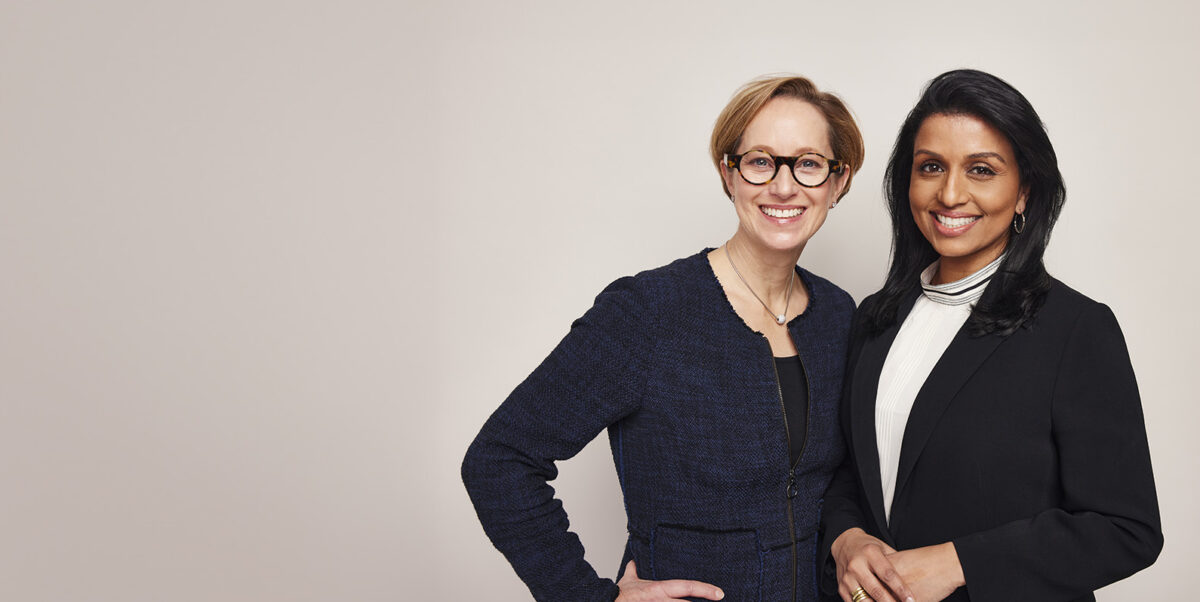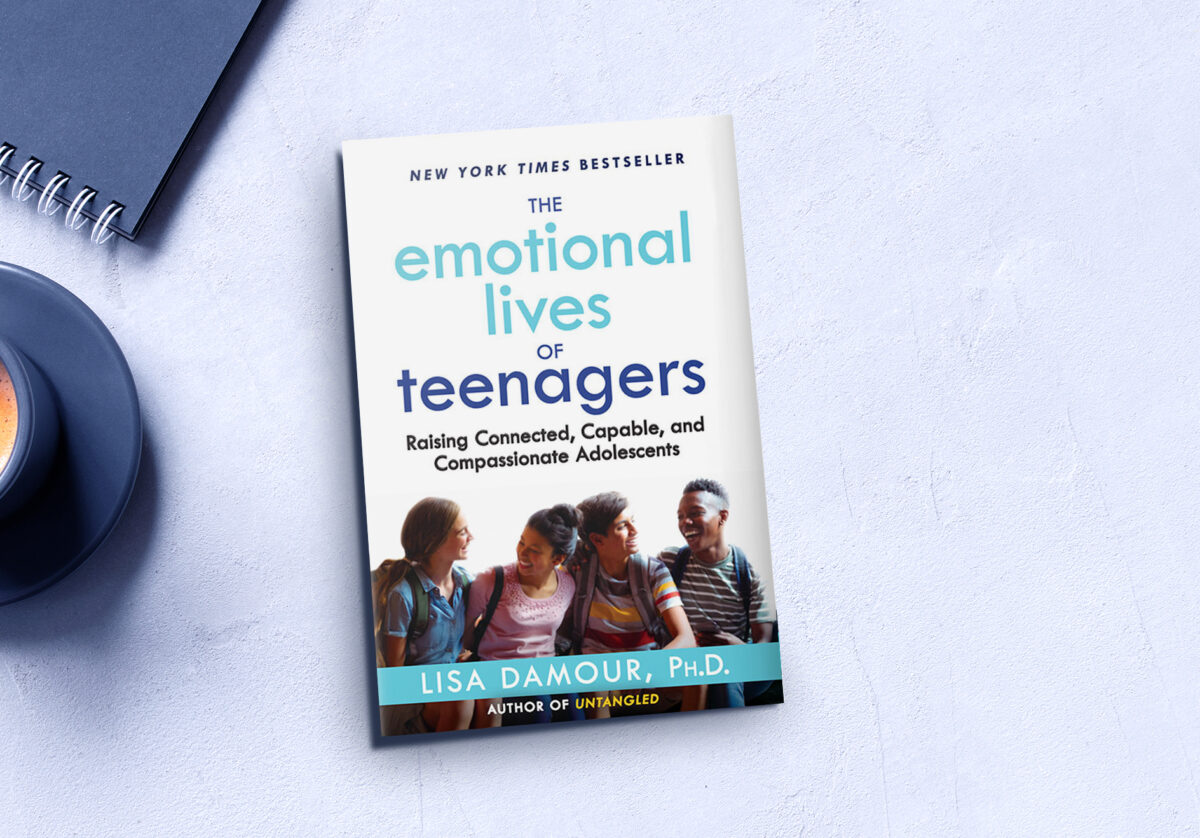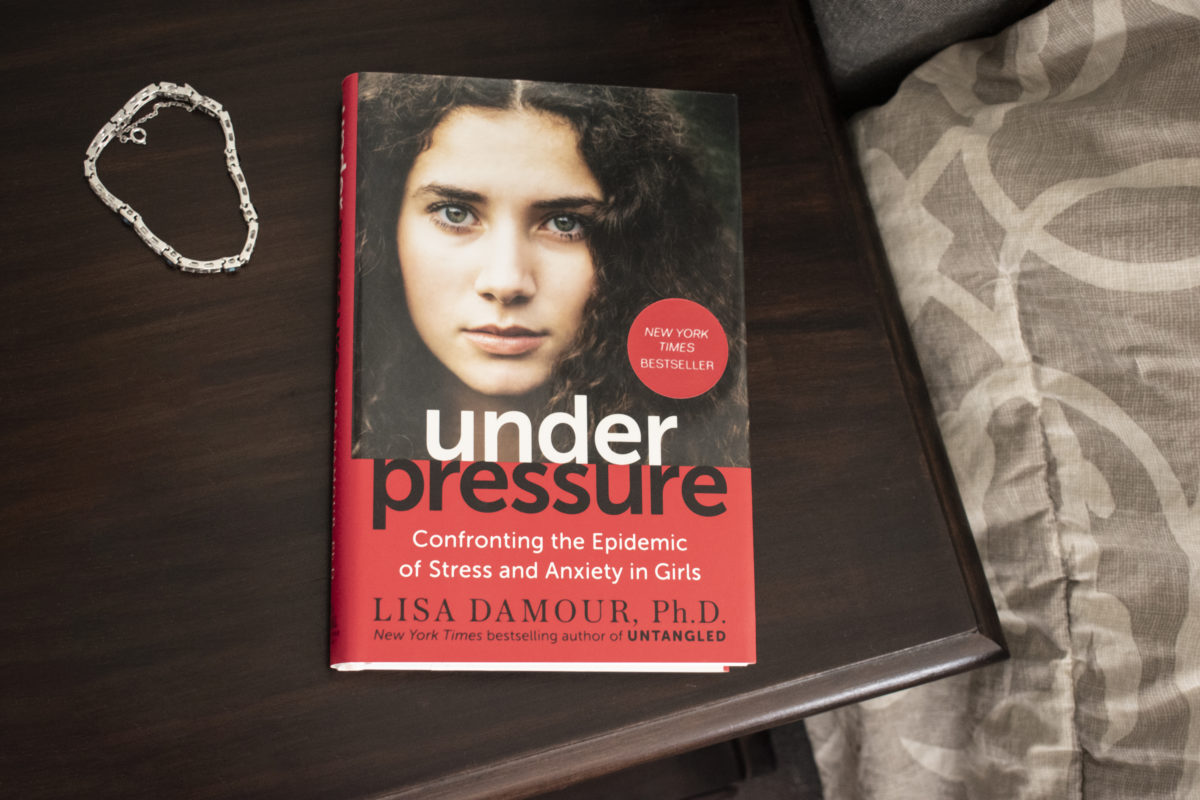Ready to make this school year your child’s best year yet? We’re kicking off Season 5 with special guest U.S. Secretary of Education Miguel Cardona! In this episode, Reena and Lisa explore the initiatives shaping the future of education. They discuss the importance of building community in schools, reducing chronic absenteeism, enhancing out-of-school activities, and expanding access to mental health support. Secretary Cardona shares powerful advice for parents on advocating for their children and celebrating their unique strengths, and Lisa emphasizes the critical role of connection in learning.
September 3, 2024 | 32 min
Transcript | U.S. Secretary of Education Miguel Cardona
The Ask Lisa Podcast does not constitute medical advice and is not a substitute for professional mental health advice, diagnosis or treatment. If you have concerns about your child’s well-being, consult a physician or mental health professional.
The following transcript has been automatically generated by an AI system and should be used for informational purposes only. We cannot guarantee the accuracy, completeness, or timeliness of the information provided.
_______
Reena Ninan:
Episode 183, Education and Parenting with special guest, US Secretary of Education, Miguel Cardona. Lisa, here we are, season five. How was your summer?
Dr. Lisa Damour:
It was wonderful. Reena, how about yours?
Reena Ninan:
It was great. We went to Sicily. We retraced family roots from my husband’s side. And I tell you, there’s something about life in Italy. We, every night got together around this big Sicilian table. We ate. We were together as a family with his brother and sister and their family. There’s something about Sunday dinner that I’m realizing that it needs to be incorporated back into family life again. It was just magical
Dr. Lisa Damour:
And those meals and having time. I know it’s just the best. It’s the absolute best.
Reena Ninan:
You left us last season with S.U.N., right? Remind us of the acronym Sun. Yes.
Dr. Lisa Damour:
The ways to restore ourselves. Sleep, unplug time and nature. And I will say I did a decent job with that this summer.
Reena Ninan:
What did you do?
Dr. Lisa Damour:
We didn’t do any big trips, but our backyard, I’ve been working on it for a few years. We had put in some perennials a couple of years ago and they’ve really started to come into their own. And so there was a lot of time actually what you’re saying about being around a table, being together. Just a lot of mellow time in the backyard. It was really, really good.
Reena Ninan:
I’m not ready for the school year. It was so peaceful and relaxing. I’ve got to figure out how to make the transition. But Lisa, I can’t imagine a better way to start our season than with a man I’ve really come to admire. We are going to be joined by US Education Secretary Miguel Cardona. He is the 12th US Secretary of Education and after a really distinguished career as an elementary school teacher, principal district administrator and Connecticut education commissioner, and he’s a firm believer that being an educator isn’t just a job, it’s an extension of your life purpose. And he’s now serving 65 million students and their families. He’s dedicated to equity and excellence and education, and he’s influenced by his grandparents’ journey from Puerto Rico in the 1960s. And I got to tell you, when he was Connecticut’s education commissioner, I will always be so personally grateful to him because he helped reopen my children’s schools, the public schools in Connecticut safely during Covid.
Then he went up to open a hundred percent of US schools. It was one of the first states really, to get the schools up and running under Covid when we just didn’t know what was going on. And he’s also pushed to make education affordable and accessible. And as education secretary, he’s delivered 130 billion in federal education, funding for P to 12 schools and 40 billion for colleges. He and his wife Marissa, also an educator, have two children, and I’m trying to figure out how heartbroken he must be right now because his youngest just started college. I want to welcome Mr. Secretary to the program. Mr. Secretary, how is your heart?
Education Secretary Dr. Miguel Cardona:
You know what? It’s amazing to, and not only as an educator but as a parent, to see your own children grow and they’re ready. My daughter’s ready to go to college. My son’s going to be a junior. I love the fact that I get to experience these big transitions as secretary because just like I’m experiencing it, parents across the country are, and for me, there’s an emotional and a personal connection to every decision that I make because my children are in our schools and I know parents want the best for their kids. So happy to be here with both of you. Thank you. That a wonderful introduction and I really am really looking forward to the conversation.
Dr. Lisa Damour:
Well, we are absolutely thrilled to have you. And I have a college age daughter. She’s a junior now, and I remember when we dropped her off feeling both sad but also much more excited than people talk about. That’s kind of the sense of she’s there, she’s ready, thrilled for her. And so I really, I hear you. It’s a mixed experience, but there’s a lot more positive than I think we sometimes give credit to. So we’re so excited to have you with us today, and we know that today you are launching a back to school bus tour. Talk to us about the bus tour. Why a bus tour? What are you up to here?
Education Secretary Dr. Miguel Cardona:
So, so excited about it. Every year we do a bus tour really to kick off the new school year. Every school year is filled with possibilities and I remember that feeling as a fourth grade teacher when the kids were coming in, they had their clothes picked out, ready to go to school, they had their clothes picked out for weeks, and the teachers are nervous and meeting their kids there is so much positive, good energy at the beginning of the school year, launching a new school year, doing a bus tour and visiting schools and visiting universities and just really celebrating what it is to begin another school year is something that honestly is one of the highlights of my work as Secretary of Education, love being in DC, love engaging, but being around students and that energy, that palpable energy in our schools when we’re kicking off this new school year is exciting. I’m so excited to be on it. We’re starting it today, as you said, and it’s really going to catapult us into an amazing school year ahead.
Dr. Lisa Damour:
Wonderful. Okay, so let’s talk about the school year and let’s really get down to business here. I know one of your big focuses has been getting kids back into school absenteeism better than anyone has been a huge problem. Post Covid nationally, roughly a quarter of students were considered chronically absent last year, and that was way up from before the pandemic, and that’s missing 10% of school days or more for any reason. I have clinically watched so many families struggle with this and I know kids miss school for so many different reasons. So you’ve created an academic acceleration program and one of its main goals is to reduce chronic absenteeism. What is it that you most want parents to know with this fresh school year about getting their kids to school?
Education Secretary Dr. Miguel Cardona:
Every day matters. Every day matters and students underperform up to like 45% if they’re chronically absent. So imagine what that does, the long-term impacts that has on a student. I remember when I was a school principal, I would talk to parents and say, imagine going to a three hour movie and missing half an hour. Would you understand what the movie? Would you miss some nuance? And then that has a ripple effect. So the message to parents is pretty straightforward. Look, we’re on the same team. If there are obstacles that are creating a situation where a child doesn’t want to go to school, doesn’t feel like they belong or there are some basic needs that are not being met, like food insecurity. I’ve had students miss school because they have a toothache and we worked in community to help address some of those obstacles. Many cases students translated for parents at doctor’s appointments. So how do we help address the root cause? And my message to parents is, we’re on the same team. Let’s work together to make sure that your child has every chance to be successful. And that starts with being in school on time every single day.
Reena Ninan:
Lisa had raised this issue of chronic absenteeism last season with me when we were planning shows and I didn’t think this was such a big deal. I just wasn’t aware of it. And I was surprised to learn it’s not a poor thing or a middle class thing. It affects everyone rich, middle class, poor. Some people have anxiety like you mentioned about going to school. How do you help get those students back into the classroom?
Education Secretary Dr. Miguel Cardona:
This is a people business. I always say this is a relationship business education, right? You can have the best policies, you have the best laid out policies, but if we don’t have relationships with our students and our families, then it doesn’t matter what the policy says. So for me, it’s really about building relationships and fostering that communication that you care about the child’s wellbeing. And when a student knows that you care, they’re more likely to want to engage. Or as you mentioned, anxiety is a big factor in some of the recent trends of chronic absenteeism. So ensuring that there are people in the schoolhouse who are caring for the child holistically, yeah, ultimately we want to get to the academics, but if a child is not there emotionally or mentally, academically, they’re not going to succeed at the highest levels. So ensuring that our schools are designed for today’s student, and the reality is, especially after the pandemic, there are many students that are struggling and need support mentally or they have high levels of anxiety.
But we know students are six times more likely to get mental health support within the schoolhouse than they are in the community. So we are big proponents of full service community schools and we have more, the funding went up five times since President Biden took office to make sure that we have adequate resources in our schools. That’s not to mention the bipartisan Safer Communities Act that provides more dollars for school counselors and things like that. So just making sure your building is designed for what our students need, but at the end of the day, kids have to know that you care and that you want them to do well. And taking that approach when supporting them and their families versus a punitive approach, I think makes a big difference.
Dr. Lisa Damour:
That is so important and so helpful. So actually on the topic of relationships and I am with you, relationships, relationships, relationships, all learning, all growth happens in that context. I know that another one of your initiatives is to really try to increase high quality out of school time for kids. One of the things I love thinking about are activities that give kids a sense of purpose. It’s so protective to mental health. That’s an example of high quality. But talk to us a little bit more. What are the kinds of activities you recommend for families? And if our listeners can contribute to this effort in their own communities, what would you have them do?
Education Secretary Dr. Miguel Cardona:
That’s such a great question. Look, let me go back to, lemme put out my father hat and go back about three years when my children, like children across the country, were trying to make sense of this hybrid. And even before in the 2020 year where they were home trying to learn through Zoom, I looked at their experience and even talking with them, I said, what do you miss most? And the reality is they missed sense of community. The sense of community that our children thrive off of was missing for a little while, and then as we went back, it was critically important that we almost compensate for the lack of community that they had in those months where they were not in school out of school time. Experiences are those things. So it could be academic in nature, remediation, tutoring support. It could be athletics, it could be theater.
For my children, athletics and theater. Theater was such a saving grace. I always said music and the arts heal. They heal students, they heal communities and they healed our country. It could be the chess club, it could be a math program, it could be an after school club that focuses on anime, it doesn’t matter. That’s almost secondary. It’s the sense of community that our students need. Then to those who are listening, what does that mean? Look, you might be a business owner, you might be somebody that has an interest in a hobby. How could you partner with the local school to volunteer along with a staff member there to give students an opportunity to be amongst community? After hours 3:00 PM on is when students are most likely to be unsupervised or not supervised enough or just not getting the enrichment that they need. And sometimes they turn to things that might hurt them, like social media over-reliance on that. So how do we create clubs where students are in community in our schools? That’s a community-based effort. That’s all of our responsibility. There are people that are saying, well, I’m not a teacher, but you might have a skillset if you’re a musician, introducing students to your musical instrument or to performing might be something that gets them connected. It’s about human connection really. And these out of school time programs, not only are they good for academic enrichment, but they’re good for community building. And that’s what our students need right now.
Reena Ninan:
We were talking about absenteeism in schools and it’s been so hard for some kids to get back into it. And during the school year when I was growing up in Florida to get any extra special services, we know what a ding it is. In your confidence when you feel like you’re not good in math or reading, you had to really have a DRF in public school in Florida to get any sort of help. I know living in your former state where you oversaw the education community here, there are so many enrichment programs in the public schools in Connecticut that you don’t have to have a DRF, you just need to know you need a little bit of help. What are you doing to help support this lack of confidence in students that could lead to them not wanting to go to school? How can families get help and access tutoring? What’s your advice on that?
Education Secretary Dr. Miguel Cardona:
Well, my message to families is the same message that I’ve been saying ever since I started in this profession. You are your child’s first and most influential teacher. We are a supporting cast. You know your child better than anyone else. You are the expert in your child. So your advocacy for your child is critical. What we’re trying to do across the country is really think about our schools as an investment in our communities, in our country. So we want to make sure that we’re adequately funding enrichment programs, programs that help level the playing field and those communities where children only have what the public schools offer. There’s so many communities in our country where whatever enrichment students are going to see, it’s going to be because their school either offers it or partners with a community-based organization. So whether it’s 20 century grants, most recently the Safer Communities Act, we provided more dollars for mental health supports, and that could also be done in the form of enrichment because sometimes mental health support isn’t just seeing someone when you’re feeling down.
It’s a proactive program that brings students and connects them so that they’re feeling better about themselves or they’re seeing the value that they bring to the table of their assets. So we have grant funds that go toward ensuring that our schools are designed for the needs of our students. Another thing that we’re really proud of, as I mentioned earlier, is the community schools grants, right? Full service community schools where we have schools that, I remember visiting a school in Pennsylvania that was using community schools funding, and it was fascinating. I walked in one part of the building in very academic in nature, and then I walked to another part of the building. It was run by the community and they had afterschool programs for all the students. So the director of that connected with the YMCA, with the Boys and Girls Club, with the Girls Inc, with the Boy Scouts, girl Scouts to give students afterschool experiences, well coordinated efforts using federal dollars that are aimed at community schools. So whether it’s officially a community school or not, it’s those type of efforts that really bring the resources in the community together that gives the students the best options for success.
Dr. Lisa Damour:
I love it. I love it. And it’s so interesting. I want to come back to mental health because as a clinical psychologist, my view, the longer I’ve practiced of what constitutes a therapeutic interaction has widened and widened and widened, right? So what you were saying about kids in the arts, I mean, I know lots of kids, lots of kids who are saved by their theater teacher. It’s not somebody who’s necessarily got specialized training. It’s about the relationships and being seen and known. Okay, but on that, there are kids I know Rena knows who are still going to need specialized care. You said something so, so compelling about kids are so much more likely to get that care in school than in the community, which is so true. It’s impossible to find a clinician. And I know you’ve put about $180 million towards increasing and diversifying school-based care. Yes. Tell us a bit about the impact you’re hoping that this funding is going to have?
Education Secretary Dr. Miguel Cardona:
Absolutely. Supporting students. There’s a continuum. My sister’s a school social worker, and we often talk about the DSM four or five or whatever, but it’s really about where are the students and what is the need that they have. But when it gets to the point where they do need specialized care, we have to make sure that our schools are equipped with the tools to get the job done. I remember as a school principal having students waiting 3, 4, 5 months to find a clinician in the community. But then I also had the great experience of having a community-based health center located within the school where I was serving as principal, where children were getting behavioral health, mental health support, dental health, it’s hard to learn if your teeth hurt, right? True. So what we’re fostering at the federal level are grants funds to provide different approaches to this.
Yes, we want more school social workers. Yes, we want more school counselors, but in many cases, due to maybe the challenge of finding talent, we see schools using some of these dollars to create contracts and partnerships with community-based organizations so that our students have access to the health and support that they need, whether it’s within the schoolhouse or outside of the schoolhouse, through the schoolhouse. So we’re seeing creative options. I mean, I visited, I think it was New Mexico where there was a hospital connected to a high school, and the hospital not only provided students with the support that they needed physical health and mental health, but they also provided dual enrollment courses so that students could learn by doing through an apprenticeship at the hospital and they could think about medical careers. We need to think outside the box. If we do what we’ve done, we’re going to get the same results we’ve gotten.
So the pandemic disrupted our schools. We are not required, in fact, we’d be harming our students if we build it back the same way it was. We need to think outside the box. And with access to mental health supports, we have to be innovative and creative. We have to recognize, number one, we have to remove the stigma and we have to have students accept and welcome and receive the support openly like they would if they broke their arm, they would go to the nurse without any reservation. We have to de-stigmatize it and make sure that we’re making it something that students can access without feeling ostracized or feeling that they’re different. And I would argue too, that we need to normalize this for the adults that work with our children too. For many years, our teachers and educators have had displaced trauma and have never really had an opportunity to address that. So to me, healthy communities lead to successful students and successful educators, and that’s what we’re promoting in the Biden Harris administration.
Reena Ninan:
Secretary Cardona. When you were talking about thinking outside the box, I don’t know if many people know this, but didn’t you go to a trade school?
Education Secretary Dr. Miguel Cardona:
I did.
Reena Ninan:
You are actually a trained mechanic. Do I have that right?
Education Secretary Dr. Miguel Cardona:
I don’t know if I would consider myself that now, but I did learn in high school. I was in a trade technical high school. I was learning to be an automotive technician for four years. And I say the story jokingly, so I grew up in a community in Connecticut where a lot of my cousins were together. We all came from the same community. Our parents came from the same community in Puerto Rico, so there were like 10 or 15 cousins, and the eldest cousin went to this trade school and then little ducks, all the other cousins followed them in, but we graduated with options. So yes, I learned a trade school. I went to a trade school and I learned a trade. I went to college and I want to de-stigmatize that pathways also and say, when you graduate with options, you’re better off.
Reena Ninan:
I just love that. You’re also thinking not everybody needs to go to a four year college and we need people going to trade schools. We need people in hairstylists, plumbers, and absolutely. We never talk about that enough that that could be a wonderful career for people too.
Education Secretary Dr. Miguel Cardona:
Absolutely. We talk about de-stigmatizing mental health supports. I think in this country we have the old school mentality. The trades or manufacturing is dirty, dark, dingy, and dangerous. I got to tell you, I’ve seen amazing models across our country where we have high school students getting college credits, externships, which are better ways to learn because you’re learning by doing and walking into careers making 60, $70,000. They continue to a two year degree or a credential, and they make well over six figures. I’ll give you a very specific example. In Connecticut, we have Groton submarine base. Students in high school could learn how to weld and go in and get a career started without any debt, or they can continue to a two year college or even a four year college, learn how to code. And instead of welding, now you’re coding machines to do the welding. You’re making well over six figures without four year college debt. We need to provide options for our students, and I think this is not just the job for our technical trade schools. This is for all comprehensive high schools. It doesn’t mean you don’t go for your four year degree. It means you graduate with options like I did.
Reena Ninan:
We love options, and I love that. I love that being able to put kids into high schools where that fits things are interested in. I love that. Lisa and I did a digital parenting summit in New York. That episode ran last week, and one of the topics that came up with parents cell phone use, and I’d love to get you to weigh in on what your thoughts are about because there’s a whole movement about let’s just remove the cell phones from the schools. What’s your take on that and what’s your advice to parents?
Education Secretary Dr. Miguel Cardona:
Well, I’m going to date myself a little bit. Back in the 19 hundreds when I was
Reena Ninan:
A fourth grade teacher,
Education Secretary Dr. Miguel Cardona:
I came in to teaching when the internet was starting to really expand when having a computer in your classroom that had access to the internet was a new thing. I remember having that Macintosh with the big green back. I was like, wow. And I think we need to learn from those years with the advent of artificial intelligence. We know social media for the last 10 years has really dominated the conversations around cell phone use. My mentality on this is we need to make sure we have guardrails to protect children, but we have to be careful because if we think that we can eliminate the use of that, they’re going to do it without the adult guidance. I believe digital citizenry is critically important. I would rather have it be used in a way that enhances learning as a tool to learning, but not be the distracting thing.
So it doesn’t matter if it’s a cell phone, if beepers back in the day or any other walkmans for that matter. When you have a school that has good structure, a good climate clear procedures that are embraced by not only the educators but the parents and the students, you can create a culture where you’re teaching students how to engage in a way that’s respectful and meaningful. So if the culture and climate are not there, it could be the cell phone, it could be your laptop, it could be the school issued Chromebook. I’ve seen Chromebooks being misused in classrooms when the teacher’s not looking. So I recognize that there are communities in our country that are looking to limit cell phone use, and I think it is well within the right and the responsibility of the Board of Education, the local board of education to engage families, students, and educators in what’s most appropriate for our community. But I want to be careful to paint with a broad brush. It’s either we show them how to use artificial intelligence appropriately or social media, or we’re going to deal with the consequences of students that are doing it without adult supervision or without adult guidance. We as education, as an education institution have to evolve to make sure that our students are prepared for the tools that are out there and the risks that come with those.
Reena Ninan:
I’d like to end and ask both of you this question. We’re kicking off the school year. Parents are still the excited phase and kids are adjusting. But as someone who was the one Indian kid who always struck out on the spelling bee first round and was bad in math school, can be difficult for some kids. What’s your advice, secretary Cardone? As we’re kicking off this school year, kids have anxiety. I love you and Dr. Lisa to give us some advice of how you think we should think of this school year.
Education Secretary Dr. Miguel Cardona:
I always say that this energy as school starts, it’s a honeymoon that I hope never ends. But look, I’m a father. My wife and I experienced what it is to be a parent in this generation. I recognize that it can be challenging for students, for children, and I recognize that in your case, it was being a student that maybe didn’t fit the stereotypes that people put on you. And I can relate to that not only as a Latino and a student that went to a trade school, and I look at that now as I say, what made me different became my superpower. Later. My bilingualism and biculturalism became part of the reason why the president selected me, because I was able to navigate different perspectives to reopen schools quicker because I welcome different perspectives to the table. So to the students and families who are listening, my message is, yes, it could be challenging at times, and I just want them to be reaffirmed in the knowledge that the uniqueness will be the strength moving forward.
And I always say now, and I could say this now, I’m the same person from the body of to the briefing room. You don’t change your stripes. You embrace who you are and it’s that different that makes you special and unique. And I always call it a superpower because I want to turn on its head what some people see deficits I see as assets. So when I say biculturalism, bilingualism is a superpower, what I’m trying to say is what makes our students a little bit different is what’s going to make them unique and successful in life.
Dr. Lisa Damour:
Oh man. And now you want me to follow on that, Rina?
Reena Ninan:
Yes, please.
Dr. Lisa Damour:
Alright, well I’ll just take a quarter turn on it. It’s in the challenges that we grow. I have a daughter who just started eighth grade. Eighth grade is hard. It comes with all sorts of challenges. And so one of the things that I’ve tried to do as a parent is to say to both of my girls, if it’s easy, the work’s not right for you. If you understand what’s happening, you’re in the wrong class. You should be working at your edge. You are growing when you’re uncomfortable. The analogy I love the most is strength training. I beat this to death. That learning is going into the weight room. If you are working with one pound weights, you’re not getting anything done. It is in the discomfort that you know are growing. And so prepare for some stress because that is how you know that you’re going to get something out of this school year.
Reena Ninan:
I’m so grateful, secretary Cardone to have you join us today. Lisa, you’re sage advice as well. We are excited about your bus tour. We’re going to have all the details in our show notes. I encourage you guys to follow Secretary Cardona on his Instagram handle. It’s at S sec C sec Cardona, C-A-R-D-O-N-A, and also follow U-S-E-D-G-O-V uss gov. I’ll have all of this in our show notes. Mr. Secretary, we’re so grateful to have you join the Essence of podcast. It
Education Secretary Dr. Miguel Cardona:
Was really my pleasure. I love having conversations about students and education and I’m so excited about the school year. It’s going to be a great year, and I appreciate the opportunity to be able to have some conversation time with you.
Dr. Lisa Damour:
Thank you so much for being with us. Really, this was an honor and a pleasure.
Education Secretary Dr. Miguel Cardona:
Thank you.
Reena Ninan:
And Lisa, what do you have for us for parenting to go?
Dr. Lisa Damour:
Oh man. There’s like 400 things that I could
Reena Ninan:
Pick up here. He left us with a lot. He really
Dr. Lisa Damour:
Did. I know. I’m just going to choose one, which is the piece around connection being necessary before content. I think sometimes we think kids can learn in the absence of connection, but we have studied this 400 ways. All learning happens in the context of a working relationship. And so the goal is to make sure that kids have access to caring adults in their schools. And it’s not always every teacher, it’s never going to be every teacher, but there needs to be just such a heavy focus. And I love his message so much on the importance of relationships because nothing good happens for kids in their absence.
Reena Ninan:
That’s powerful. That’s really great. I loved having the secretary because he’s just so different and his unique, like he said, his difference is really, I think what makes him a fabulous education secretary because it is opening the door for so many other people. And so I’m excited about this bus tour. There’ll be more in our show notes to check out. I’ll see you next week.
Dr. Lisa Damour:
I’ll see you next week.
More resources
